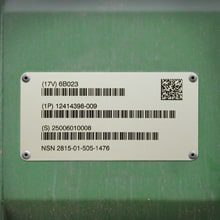4 Ways Military and Defense Can Improve Equipment Tracking


Tracking assets within the military and defense industry is a massive endeavor, demanding keen oversight and a comprehensive strategy to be effective for any organization. With mobility being a key differentiator for military applications, there is always constant movement throughout the supply chain. A lack of efficient equipment tracking can cause constant delays and issues for logistics, operations, and all aspects of the operation.

Asset tracking is so critical that the Department of Defense (DOD) itself continues to execute a long-term asset tracking strategy seeking continuous improvements to its operations. The structure of the DOD strategy provides an excellent framework, and we have extracted some key learnings from the report. Here are four ways that any military and defense organization can enhance its equipment tracking capabilities.
Military and defense needs are constantly evolving, so keeping up with client requirements can be a challenge. Part of the difficulty comes from the need to maintain visibility over your equipment and knowing which assets can be deployed to meet those requirements at any given time.
One of the best ways that an organization can improve visibility, inventory accuracy, and processing times is with UID labels. These durable tags can be integrated with your existing military asset tracking software and customized to meet your needs. UID labels from Camcode, an experienced UID provider for the defense industry, also meet MIL-STD-130 and STANAG 2290 requirements. The ability to scan these resources in the field and maintain visibility in your system gives you the best possible platform from which to support your business needs.
Read more about unique identifiers (UID).
Utilizing the latest in technology to maintain end-to-end visibility into the supply chain is essential for military and defense operations. Improvements in cloud computing, asset tracking, robotics, and automation now provide companies with a fully integrated solution for managing all of their assets. It is recommended to take a high-level view of your supply chain when planning and to always look at the big picture as well as the granular details. Understanding the mobility of your military and defense assets allows you to optimize their movements and make decisions about deployment, maintenance, and warehousing, in context.

Asset tagging is a great way to improve the efficiency of your physical inventory management. An effective asset tagging process begins with a thorough review of your existing fixed and moveable assets to determine which items should be tagged. Once you’ve identified the items that require tagging, you can select which tag material is needed for each asset, how the tags integrate with your current scanner technology, and any preparation needed for your asset tracking software to seamless data transmission.
Finally, you must settle on a suitable barcode symbology, the text at the bottom of your barcodes, that is in a discrete code format (Code 39 is standard for military applications). After your tags are then properly applied following industry standard requirements and best practices, your assets can be tracked and monitored throughout the supply chain.
Inventory accuracy can make or break your military and defense operation. Having inventory data that you can trust is the only way to ensure that your orders can be fulfilled reliably and that you have assets available when you need them. Conduct regular physical inventory counts and compare these figures with those in your asset tracking software to improve accuracy. After completing a cycle, you can review your percent accuracy and set a threshold to target for future cycle counts. Making this a routine process and implementing improvements along the way will not only improve your inventory accuracy but also prepare you for audits.
Many of today’s military and defense organizations are facing critical demands on their operations that require continuous improvements to their equipment tracking methodologies. Today, the number of enabling technologies is extensive, making it advisable to focus on solutions with the clearest potential benefits to your efficiency.
Asset tags and UID labels have proven to be a critical component. Camcode offers a complete line of durable label solutions for MIL-STD-130 and STANAG-2290 applications that comply with the DoD’s Unique Identification (UID) program. These high-quality labels are designed to last for the expected lifespan of an asset and enable confident inventory scanning, tracking, and management across your entire supply chain.
Our sales engineers are experts in automatic asset tracking, tagging and identification,a nd can answer all your questions. Get in touch now.
Lets Talk ›Enter your information and get a free checklist of the top questions to answer and tips to plan a successful asset tagging project for any asset management or tracking system implementation.